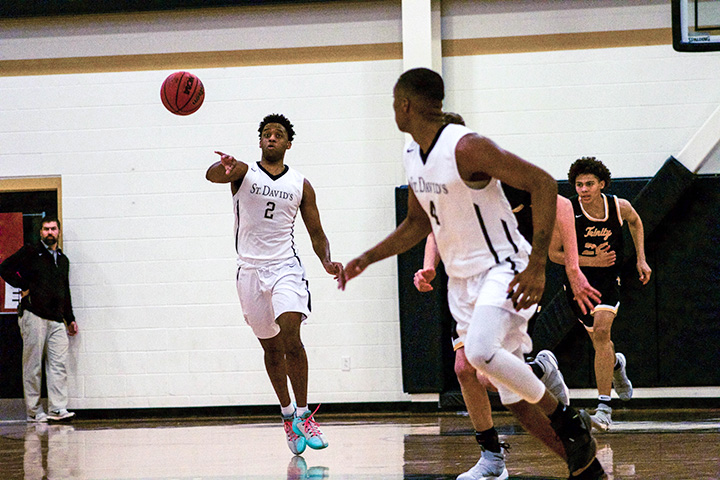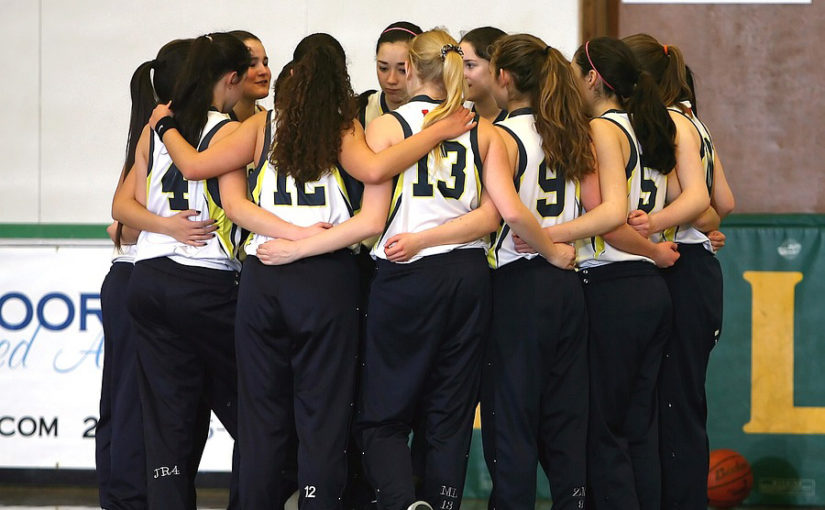Crafting basketball plays to maximize talent
A lot of us have been there. You watch videos, read books or attend clinics to improve your coaching knowledge. Or you pick up some play or pattern you really like. You take notes, redraw your diagrams and look down proudly at the nugget that could put your team over the top.
Then a sinking feeling hits you: You don’t have the athletes to run this play.
 If through hard work or good fortune you find yourself the head coach of a powerhouse program that produces a steady stream of skilled and dedicated players to fill your varsity roster, you’re among the lucky ones. But for many coaches at schools without such a strong basketball tradition, the Xs and Os of the nation’s top coaches don’t work so well. So, what do you do?
If through hard work or good fortune you find yourself the head coach of a powerhouse program that produces a steady stream of skilled and dedicated players to fill your varsity roster, you’re among the lucky ones. But for many coaches at schools without such a strong basketball tradition, the Xs and Os of the nation’s top coaches don’t work so well. So, what do you do?
In a nutshell, you have to find out what your players do best and put them in a position to succeed. This may be hard to find in a preset play or continuity, but not if you follow the principles of alignment and concepts. And with this approach, you begin laying the groundwork for that intangible every coach looks for — chemistry.
Alignments and concepts
For the sake of discussion, assume set plays do not exist. Of course, you need some set plays to get your best players open shots, but this varies from team to team. For now, just imagine a free-flowing style of play without preset movements where each player adheres to rules and concepts designed to help him or her succeed.
Alignment is how players are lined up on the court. Who are your post players, and who is on the perimeter? Depending on your personnel, this varies between programs.
Once everyone is in their best position, the one where they have the best chance to succeed, you start the process of teaching them to understand how to play with the idea of helping each of their teammates and themselves to do what they do best. This is where the idea of concepts comes into play.
Here’s an exercise you can do with your staff before the season starts. List the players on your team and what they are best at. For instance, who are your best jump shooters? Don’t list the whole team, just the players you feel good about taking a jump shot.
Let’s say you have a team that plays an open post with five perimeter players. And let’s say your point guard is a good ball handler and penetrator who doesn’t shoot well from the outside, one player is strictly an outside shooter, one can both shoot from the outside and penetrate, and two are non-shooters. In the following concepts when a player passes and screens away, the man getting the screen curls to the hoop and the screener rolls back toward the ball looking to get a return pass.
For the point guard:
• Whenever he or she passes the ball, cut to the basket.
• If a non-shooter is opposite the pass he or she screens away, the non-shooter curls to the basket and the point guard rolls to get the ball back.
• When he or she passes to the shooter/driver, use a ball screen and pop.
• If the point guard passes to the shooter, who in this case is not a good ball handler, he or she does not look to ball screen.
 We generally are not looking for our point guard to get a jump shot because that’s not their strength. We want the point guard to get a lot of ball screens and we want them moving to new areas of the court to look for penetration against a defense that is adjusting its position as the offense moves the ball.
We generally are not looking for our point guard to get a jump shot because that’s not their strength. We want the point guard to get a lot of ball screens and we want them moving to new areas of the court to look for penetration against a defense that is adjusting its position as the offense moves the ball.
For the shooter, we are looking for him or her to get jump shots, period. We don’t want to force them into ball-handling situations they can’t handle. Of course, the shooter can drive if the opportunity is there, but based on your self-scouting report, this isn’t something they do well.
For the shooter:
• No cuts to the basket except to backdoor a defensive overplay.
• If you pass to a non-shooter, screen away and roll back. We want the shooter moving to get the ball for a jump shot at all times.
• If the shooter passes to someone who can handle the ball, run a pick- and-pop ball screen.
For the shooter or driver:
• If you pass to a ball handler, look to run a pick-and-pop.
• If a non-shooter is opposite the pass, screen away and roll back.
• Be ready to receive screens to run either pick-and-pops or pick-and-rolls.
When it comes to non-shooters, we are not looking to get them jump shots or force them to handle the ball any more than they have to. We want their shots coming as they go to the basket into the higher percentage area of the court.
For non-shooters:
• If you pass to a ball handler, you can run a pick-and-roll.
• If you pass to a non-shooter, cut to the basket.
• When passing and the man opposite is a non-shooter, screen for him to cut to the basket and roll back.
One thing all of your players must understand is what to do on penetration. They should know how to position themselves for a dump off or a kickout based on where the drive is coming from.
Other alignments
Maybe your team is better in a set with one or more post players. Now you can work in options to get your post players shots inside, like downscreens or pick-and-rolls to post up.
If you have “stretch” type post players, you can have them pick-and-pop, or backscreen and step out for a pass and shot. Or if you have two post players, they can work in tandem inside while your perimeter players work as a trio on the outside, interspaced with some perimeter-post actions that fit your personnel.
In all alignments you can add wrinkles for certain players. You can put in quick-hitting two- or three-man plays before flowing into your regular offense. You can mix in complete set plays after timeouts or when you need a good shot right away.
This might seem like a lot to learn, but remember to proceed at your team’s learning pace. It’s better to be good at a few things than lousy or average at a lot of things. If you implement this type of teaching at the junior-high level of your program, by time the players get to the varsity level they should have a pretty good understanding of what’s expected of them.












